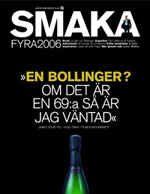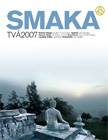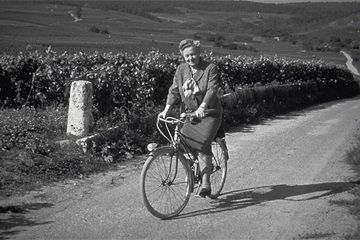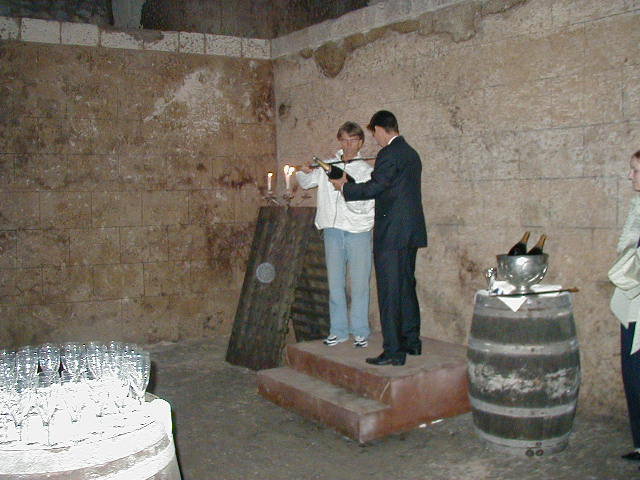

 .
. 
 |

 . . |
 |
![]()
![]()
![]()
![]()
![]()
![]()
![]()
![]()
![]()
![]()
![]()
![]()
Contact
007museum@telia.com 0046-0481-12960, James Bond Museum & Shop Emmabodav.20, 382 45 Nybro, Sweden Nybro. info 007 fanclub
Hyr hela James Bond museet Företag Event Open Daily 10
-17 (closed13-14) Sat 10.00-14.00 Sunday
closed 47 years, 22
films,billions of fans!
Bmw
Dvd/Vhs Swatch
Bic Bollinger
Corgi
Posters
Literature Cd / Lp
Game
Links
PPKGuns
Member Guestbook
![]() Mediainfo
Buy/Köpinfo
Mediainfo
Buy/Köpinfo
Sony Ericsson
K800i
Swedish
M600i
![]()






![]() Casino
Royale Bollinger
Ian Fleming
Casino
Royale Bollinger
Ian Fleming
Arvid
Nordquist James Bond Champagne Bollinger
Prenumerera på Smaka GratisVår egen tidning SMAKA innehåller smakfulla och tilltalande
reportage, intervjuer och tips om det som sätter krydda på tillvaron:
mat och dryck i fin samklang. SMAKA utkommer 4 ggr per år . |
  |
|
|
 Bollinger Spécial Cuvée 1990 Bollinger Grande Année (flasklagrad i minst fem år) 1990 Bollinger Grand Anné Rosé 1985 Bollinger R.D (Recemment Dégorgé) RD är ett vin som fått vila i minst åtta år på jästen efter den andra jäsningen. |
Tidigare utgåvor av tidningen SMAKA
http://www.arvidnordquist.se/Files/Billeder/Vin_SE/smaka/Smaka-4.pdf
http://www.classickaffe.se/Default.aspx?ID=131&q=bollinger
| Adding another installment to one of the most enduring
marketing partnerships in motion picture history, Champagne Bollinger
was again featured in a James Bond movie - Casino Royale.
Champagne Bollinger has been featured as 007's Champagne of choice in some novels of Ian Fleming, as well as the movies. List of Bollinger champagnes used in the movies: The relationship began when the Broccoli-Wilson family, producers of the Bond films, sought a wine to match Bond's impeccable taste and refined personality. Not surprisingly, they chose Champagne Bollinger, long acknowledged as one of the world's finest Champagnes. A mutual friendship developed between the Broccoli-Wilson family and the Bollinger family, and Champagne Bollinger has remained a Bond favorite even as the torch has been passed from Roger Moore to Timothy Dalton, Pierce Brosnan and now Daniel Craig. More about Bollinger: Bollinger relies on its own estate for more than 60 percent of its grape requirements, including the Pinot Noir that gives its Champagne much of its distinctive strength and structure. Bollinger is one of a select few houses that can control the quality of its grape supply so carefully. Bollinger is renowned for its use of traditional methods that include extensive use of Pinot Noir, individual vinification of each marc and cru, barrel fermentation and extra-aging of all of its Champagnes on the lees prior to disgorgement
BOLLINGER.avi
The House of Bollinger CHAMPAGNE BOLLINGER16 Rue Jules Lobet BP 4 51160 Ay -
FRANKRIKE |
|
Overview
For over 170 years, since 1829, Champagne Bollinger—one of few remaining family-owned-and-managed Grandes Marques houses in Champagne—has been renowned for the quality of its grand and premier crus vineyards. The house is also renowned for its continued use of traditional methods, including its almost exclusive use of noble pinot noir and chardonnay, barrel fermentation, aging its reserve wines in magnums that are cork-sealed, and extra-aging on the lees all its Champagnes. To ensure the continuity of its Champagnes’ extraordinary character and quality, in 1992 Champagne Bollinger published its Charter of Ethics and Quality that outlines the requisite components of a great Champagne. At Bollinger these are:
Over 70% of Bollinger’s vineyards are located in grands and premiers crus and have among the highest rating on Champagne’s echelle des crus scale of any Champagne house, an average of 98%.
Two-thirds of Bollinger’s production comes from the family's own vineyards, one of only two houses to own such a high percentage of its production.
Bollinger vintage Champagnes are made exclusively from pinot noir and chardonnay.
Grape Varieties: Bollinger uses over 60% pinot noir—the grape that gives Champagne its fullness and richness.
Barrel Fermentation: Bollinger is one of very few houses that continues to ferment all its vintage-designated Champagnes and some non-vintage in small oak barrels and remains the only Champagne house that still employs a full-time cooper.
Individual Crus: To preserve the character of each of its wines, Bollinger ferments each cru and each marc individually, and keeps each separate in traditional barrels until the assemblage rather than fermenting in large stainless steel vats where many marcs and even several crus could be required to fill a single vat with concomitant loss of individuality.
Bollinger Champagnes spend more time on the lees than most other houses’, because the longer a Champagne from noble grapes rests on its lees, the more richness and complexity it acquires.
Reserve wines, exclusively of grand and premiers crus, are individually aged, by variety, cru and vintage, in cork-sealed magnums.
Bollinger has received the Royal Warrant as Official Champagne Purveyor from seven British monarchs and R.D. was served at Charles, the Prince of Wales wedding and bachelor party.
Bollinger has been the favorite Champagne of James Bond in his last nine films.
Bollinger has the only pre-phylloxera vineyards in Champagne.
Bollinger owns the vineyard that produced Thomas Jefferson’s favorite wine from “Champagne”.
Bubbles It's a well-kept secret, but each bottle of R.D. has 56,000,000 bubbles.
Wines produced
Special Cuvée NV R.D. 1990 Grande Année 1995
Bollinger Rosé 1996 Côtes aux Enfants 1997 Vieilles Vignes Francaises 1996
| THE HISTORY OF A CHAMPAGNE FAMILY
Overview Seven members (in bold, below) from six generations of the Champagne Bollinger family have served as president of the firm since its founding in 1829. Their goal has been to offer enthusiasts a unique wine whose style is intimately linked to the history of a family that has chosen to remain profoundly rooted in the singular interpretation of its vineyards and region. In this era of conglomerization, Champagne Bollinger has been faithful to its traditions by remaining one of the last independent, family-owned and managed houses in Champagne. Future "Bollinger today is quite simply a blend of the past and the future," Serena Sutcliffe states in the Cyril Ray book, Bollinger: Tradition of a Champagne Family (Heinemann, London, 1994). "Where the past embodies traditions proved by generations to have been good, it remains as the backbone of the firm and the wine. Where the future demands new exigencies in quality control and consistency, Bollinger rises to the challenge and arrives there before its competitors. Today at Bollinger is constant awareness of fulfilling a historic role in Champagne married to forward-looking vision and energy." 1650 The Hennequin de Villermont family settles in Champagne, at the Castle of Cuis, whose remnants are still visible. 1750 Pierre Gilles Nicholas Hennequin, Lord of Villermont, Cuis, Cramant, Chouilly, La Tour, Cuisle, St. Martin aux Champs, and Champoulain (17 ? –1795), moves to 16 Rue Jules Lobet in Ay, where Champagne Bollinger is located to this day. There is no proof that he owned the villages listed in his title; indeed, he was not a man of wealth, though he did own vineyards in Ay, Cuis and Cramant. 1763 Athanase Louis Emmanuel Hennequin, Lord of Villermont, (1763-1840) is born to Gilles. As a lad, he joins the French Navy as an ensign and fights with the Americans during their War of Independence, including in Chesapeake Bay on September 5, 1781. By 1791, an officer, he is back in Europe and fights at the battle of Maestricht. During the French Revolution, de Villermont exiles himself to Russia, from 1794 to 1798, where he is a commander in the Imperial Russian Navy. With the subsequent brief restoration of the Bourbon family under Louis XVIII, de Villermont returns to France where he is eventually promoted to rear admiral and governor of the Royal Naval College of Angouleme. Unfortunately, many of his lands are not restituted after the Revolution. 1815 When the Russians invade Champagne in July 1815, they spare the village of Ay because of de Villermont’s service in the Russian Navy. His share of the family estate survives the Revolution but income is low so, existing Bollinger invoices show, he begins shipping small quantities of the 1812 vintage of his still and sparkling wines, primarily Cremant, to customers in France and the English Channel Islands, though not under his own name, as it was unseemly for aristocrats then to be in commerce. 1829 Jacques Joseph Placide Bollinger (1803-1888) was born to a noblewoman and legal officer in Ellwangen in the Kingdom of Wurtemberg. In 1822, at 19, he joined Muller-Ruinart (no longer in existence) to sell their Champagne in the Kingdoms of Bavaria, Hanover, Wurtemberg and the Netherlands. In 1829, with his Muller-Ruinart colleague Paul Renaudin and de Villermont, he forms the Renaudin Bollinger company on February 6. Paul Renaudin dies without heirs, but tradition at Bollinger is so strong that his name remains on the label until 1960. 1837 At 34, Jacques, who becomes a French citizen in 1846, marries de Villermont's twenty-year old daughter from his second marriage, Charlotte, and they have one daughter, Marie, who eventually marries Jules Moret de Rocheprise, and two sons, Joseph and Georges. 1870 Jacques exports his first shipment to the U.S. 1884 Georges is awarded the Royal Warrant from Queen Victoria and a year later from the Prince of Wales 1888 Georges and Joseph Bollinger take over the business on Jacques death, and acquire vineyards in the villages of Louvois, Bouzy, and Verzenay as they expand exports. 1901 Georges is awarded the Royal Warrant from King Edward VII and, again, in 1910, from King George V and Queen Mary. 1911 Because Bollinger had always used grapes grown exclusively in Champagne, the house is spared during the Ay Riots when many Champagne houses are put to the torch for importing grapes from outside the region. Georges is elected to the Ay city council, where he continues to serve during the German invasion of 1914. 1918 Georges dies and his son Jacques (1893-1941), at age 25, takes over, following a career as a glamorous and distinguished Farman pilot in the French Air Force during World War I, for which he receives the Legion d'Honneur and Croix de Guerre by the age of 24. 1936 Jacques replants the two-acre Cote aux Enfants vineyard in Ay and purchases vineyards in Tauxieres as well as the Duminy house and cellars on Boulevard Marechal de Lattre de Tassigny (which today are Bollinger’s offices) and connects them, via underground cellars, to his own cellars around the corner on Rue Jules Lobet. 1940 A month after the Germans requisition the Bollinger home and force the family out (during which time they take 178,000 bottles of Champagne), they demand that the Bollingers return to work. To protect their vineyards, winery, and remaining inventory, the family returns to work in the vineyards and winery. When told they are ‘goldbricking’, Jacques says they require help and thus is able to free many of the family’s workers from prison camp. 1941 When Jacques Bollinger dies during the Nazi occupation of Champagne, Elizabeth ‘Lily’ Law de Lauriston Boubers (1899-1977, married to Jacques in November 1923), takes over. As they have no children, she is already deeply immersed in the business and so is able to run it, even during the difficult World War II years. During her 30 years as head of Bollinger, she acquires additional vineyards in Ay, Mutigny, Grauves (1955 and 1968) and Bisseuil (1961). 1944 On August 10 Bollinger's properties are heavily damaged when a third of Ay is destroyed by Allied bombardments to destroy German munitions, but on August 22, General Patton's U.S. Third Army arrives just in time to stop the retreating German army from dynamiting Bollinger's cellars and Ay. 1950 Lily is awarded the Royal Warrant from George VI and the Queen Mother. 1951 Lily purchases from the Deuil family the one-and-a-half-hectare grand cru Cote aux Enfants plot between Rues de la Breche and Allard in the village of Ay, the vineyard from which Thomas Jefferson’s favorite wine of Champagne originated. 1955 Lily is awarded the Royal Warrant from Queen Elizabeth II. 1964 Lily purchases Bollinger’s U.K. importer (since 1851), Mentzendorff, to assure the correct distribution of Bollinger’s Champagnes in its most important market. 1971 Claude d’Hautefeuille (1913-2000), son-in-law of Lily’s sister Therese de Valbray, who joins Bollinger in 1950, becomes president, following 18 years in the French Foreign Legion. A year later Lily retires, though she remains active until her death in 1977. D'Hautefeuille, president of the Syndicat des Grandes Marques de Champagne from 1968 to 1974, purchases vineyards in Champvoisy and maintains Bollinger's policy of quality and independence while modernizing the company and increasing exports. He retires from the presidency in 1978, becoming chairman emeritus of the board until 1998. Heinemann publishes Bollinger: Tradition of a Champagne Family, written as tribute to the house by Cyril Ray. 1975 Bollinger introduces its unique pre-phylloxera ungrafted vineyard with the 1969 vintage, naming it Vieilles Vignes Françaises. 1978 Christian Bizot (1928-2002), son of Lily’s youngest sister, Guillemette, and Parisian banker Henry Bizot, who joins Bollinger in 1952, becomes president and increases exports to 83% of production while maintaining Bollinger's traditional values. He purchases vineyards in Mutigny, and discontinues the house’s Extra Dry, saying its dosage masks the excellence of the wine. In 1989, for his commitment to quality, he is named one of only two Honorary Masters of Wine. In March 1992, when criticism of Champagne for its declining quality has reached a roar in England and France, Bizot publishes a Charter of Ethics and Quality that makes public its guidelines for producing world-class Champagne; the family also begins listing basic information regarding cru quality, grapes and aging on each of its Champagnes’ back labels. 1981 For the first time, Bollinger bottles its Ay Cote aux Enfants vineyard pinot noir, with the 1979 vintage. 1987 To honor Lily on the 10th anniversary of her death, Bollinger establishes the Madame Bollinger Foundation to promote the highest ethical and quality standards in the wine industry. With its first grant of 30,000 pounds to the Institute of Masters of Wine in 1988, the foundation extends the Masters of Wine exam to overseas candidates. Additional grants are made in subsequent years, and the Foundation also awards a Madame Bollinger Medal of Excellence in Wine Tasting to the best taster in the Master of Wine Exam.
Given the accelerating trend of conglomerization in Champagne, to protect itself from a hostile takeover, Bollinger restructures to a family-owed holding company, Jacques Bollinger Cie., with all shares entirely in family hands. 1993 Bollinger creates the R.D. Circle to ensure that enthusiasts and collectors receive their R.D. in perfect condition, fresh and directly from the winery rather than after months and even years of storage under uncertain conditions. 1993 Ghislain de Montgolfier (1943-), great-grandson of founder Jacques Joseph Bollinger, and nephew of Jacques and Lily, becomes Bollinger’s seventh president in December after serving on the company’s board of directors from 1985, and joining Bollinger as director general in 1990 following a career in agricultural research in the public and private sectors. He purchases vineyards in Louvois and Vertus. In 1993, he becomes president of the Technical Commission of the CIVC (Comité Interprofessionnel du Vin de Champagne).
Heinemann republishes Cyril Ray's Bollinger: Tradition of a Champagne Family, updated and with a new chapter by Serena Sutcliffe, U.K. M.W. 2000 Bollinger holds a meeting with the young generation (under 35) of Union of Growers, during which many say they have a vision of how they want their Champagnes to taste, but Bolly already produces such Champagnes. 2001 Bollinger opens its first Bollinger Bar,
in the Le Meridien in Grosvenor House on Park Lane in
London in March.
|

James Bond (Gunnar Schäfer ) Sabrerar i Madame Pommery huset på Place du Général Gourand i Reims Pommery på Place du Général Gourand i Reims 2002

Copyright © 2001-2009 www.JamesBond-Shop.com / www.007Museum.com All Rights Reserved
James Bond Materials© 1962 - 2009 United Artists Corporation and Danjaq, LLC. 007 Gun Logo© 1962 United Artists Corporation and Danjaq, LLC. 007 Gun Logo, Iris Logo, JAMES BOND and all other James Bond related trademarks - Danjaq, LLC. All Rights Reserved. Copyright
|